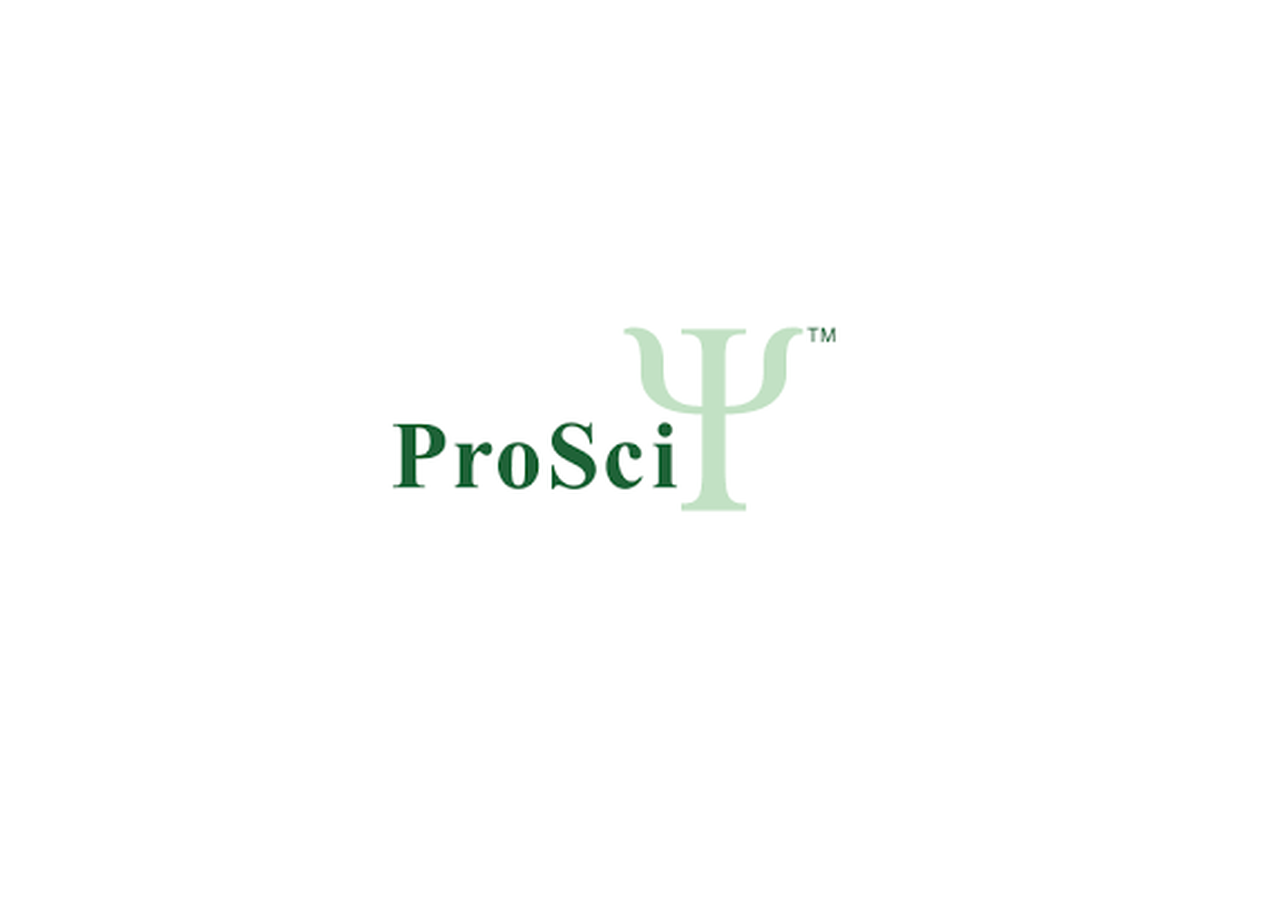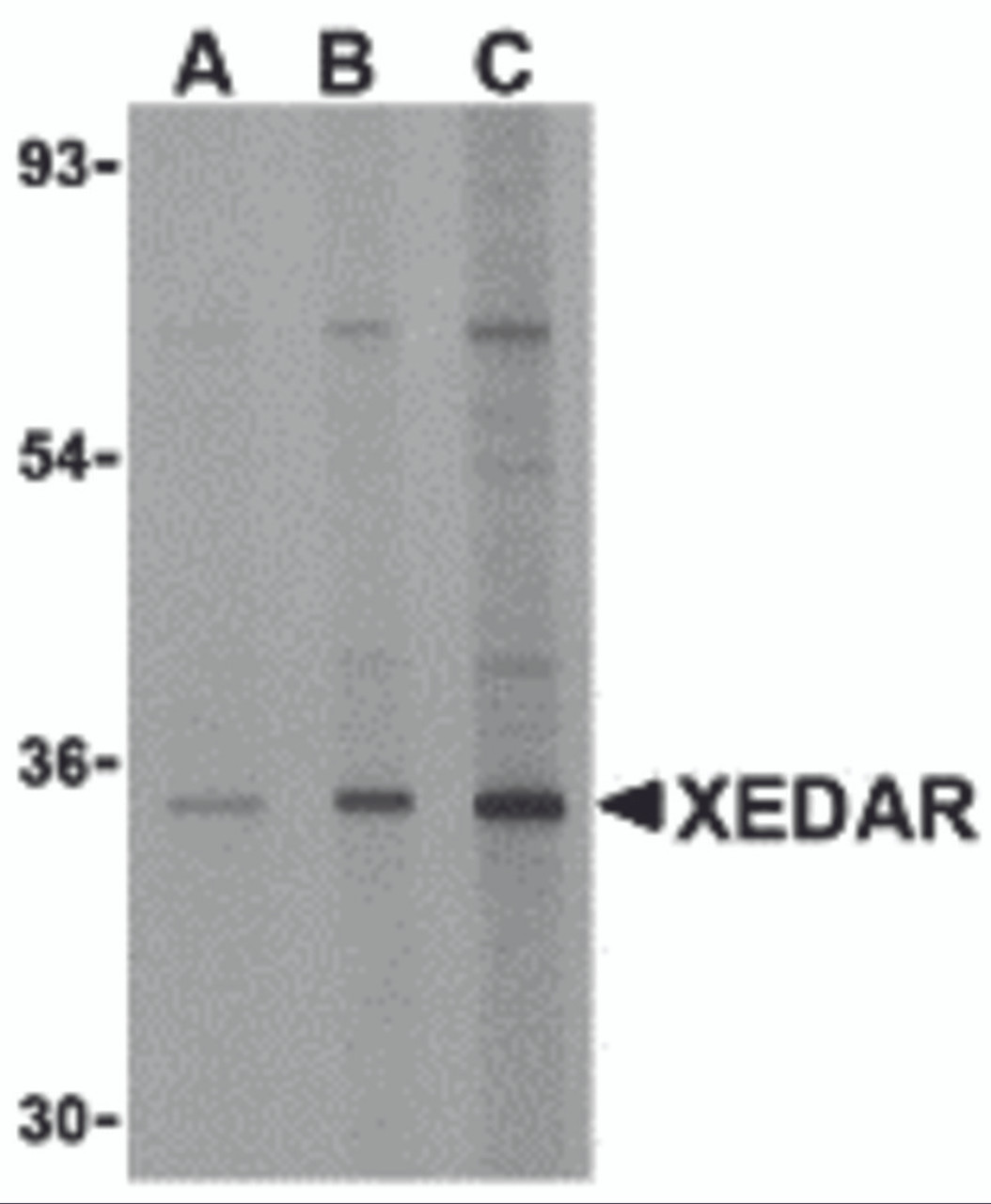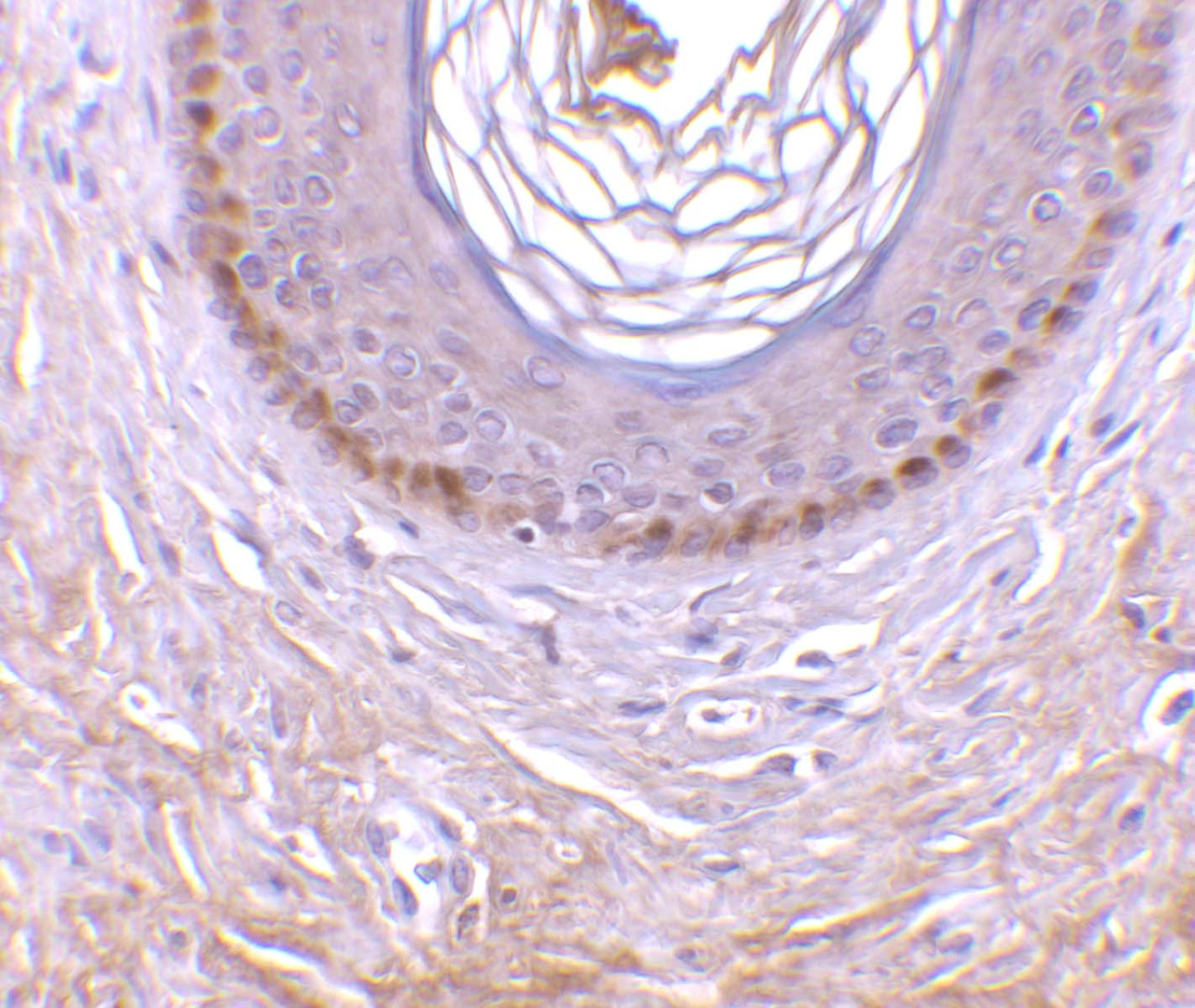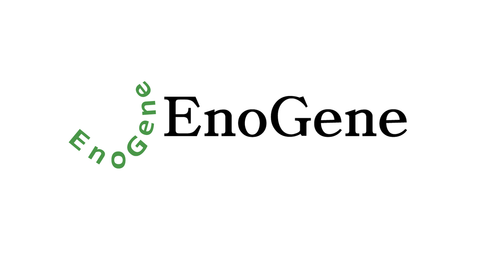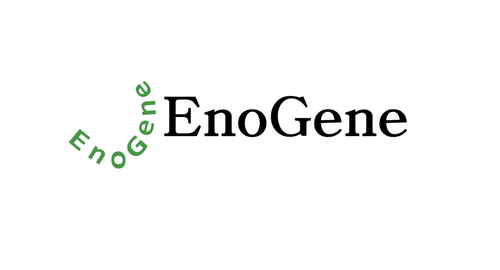Product Description
XEDAR Antibody | 3855 | ProSci
Host: Rabbit
Reactivity: Human
Homology: N/A
Immunogen: XEDAR antibody was raised against recombinant human XEDAR.
Research Area: Signal Transduction
Tested Application: E, WB, IHC-P
Application: XEDAR antibody can be used for the detection of XEDAR by Western blot at 0.5 - 2 μg/mL. Antibody can also be used for immunohistochemistry starting at 10 μg/mL.
Antibody validated: Western Blot in human samples and Immunohistochemistry in human samples. All other applications and species not yet tested.
Specificiy: N/A
Positive Control 1: Cat. No. 1210 - HEK293 Cell Lysate
Positive Control 2: Cat. No. 1376 - Human Skin Tissue Lysate
Positive Control 3: Cat. No. 12-701 - Human Skin Tissue Slide
Positive Control 4: N/A
Positive Control 5: N/A
Positive Control 6: N/A
Molecular Weight: N/A
Validation: N/A
Isoform: N/A
Purification: XEDAR Antibody is affinity chromatography purified via peptide column.
Clonality: Polyclonal
Clone: N/A
Isotype: IgG
Conjugate: Unconjugated
Physical State: Liquid
Buffer: XEDAR Antibody is supplied in PBS containing 0.02% sodium azide.
Concentration: 1 mg/mL
Storage Condition: XEDAR antibody can be stored at 4˚C for three months and -20˚C, stable for up to one year. As with all antibodies care should be taken to avoid repeated freeze thaw cycles. Antibodies should not be exposed to prolonged high temperatures.
Alternate Name: XEDAR Antibody: XEDAR, EDAA2R, EDA-A2R, TNFRSF27, XEDAR, UNQ2448/PRO5727/PRO34080, Tumor necrosis factor receptor superfamily member 27, X-linked ectodysplasin-A2 receptor, EDA-A2 receptor
User Note: Optimal dilutions for each application to be determined by the researcher.
BACKGROUND: XEDAR Antibody: X-linked ectodysplasin-A2 receptor (XEDAR) is a recently isolated member of the tumor necrosis factor receptor family that is highly expressed during embryonic development and binds to ectodysplatin-A2 (EDA-A2) . Two predominantly expressed isoforms, XEDAR-s and XEDAR-L, differ by only a 21-amino region at the juxtamembrane region of the cytoplasmic domain. Neither isoform possesses a death domain and both have been shown to act mainly through TRAF3 and TRAF6 to activate the NF-κB and JNK pathways. Cells transfected with XEDAR and treated with EDA-A2 cause the assembly of a secondary complex containing FADD, caspase-8 and caspase-10, leading to the activation caspase-8 and caspase-3, and finally apoptosis. The EDA-A2-induced apoptosis is dependent on caspase-9 activation, as various pharmacological and genetic inhibitors of caspase-8 blocked apoptosis following EDA-A2 treatment.
 Euro
Euro
 USD
USD
 British Pound
British Pound
 NULL
NULL

